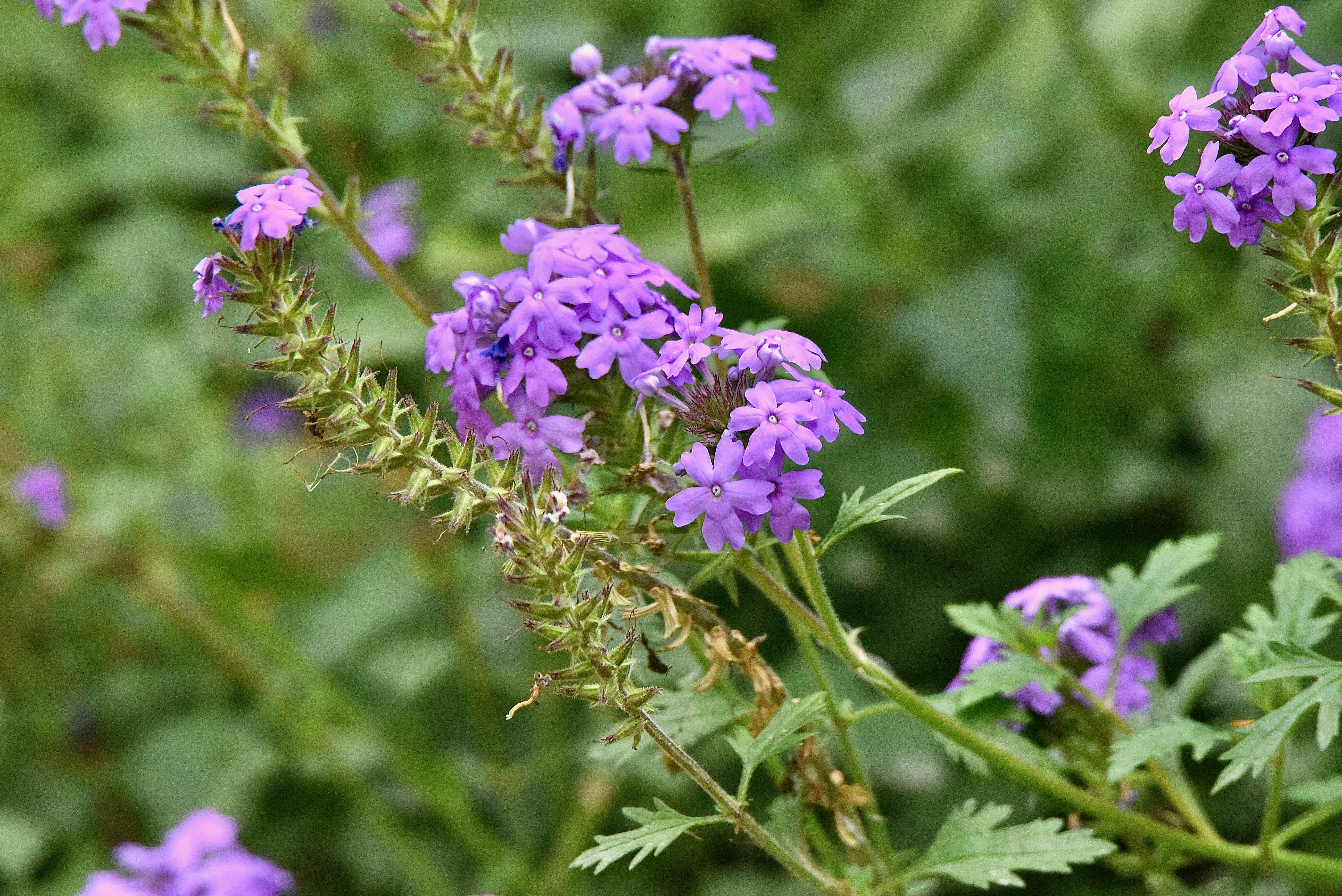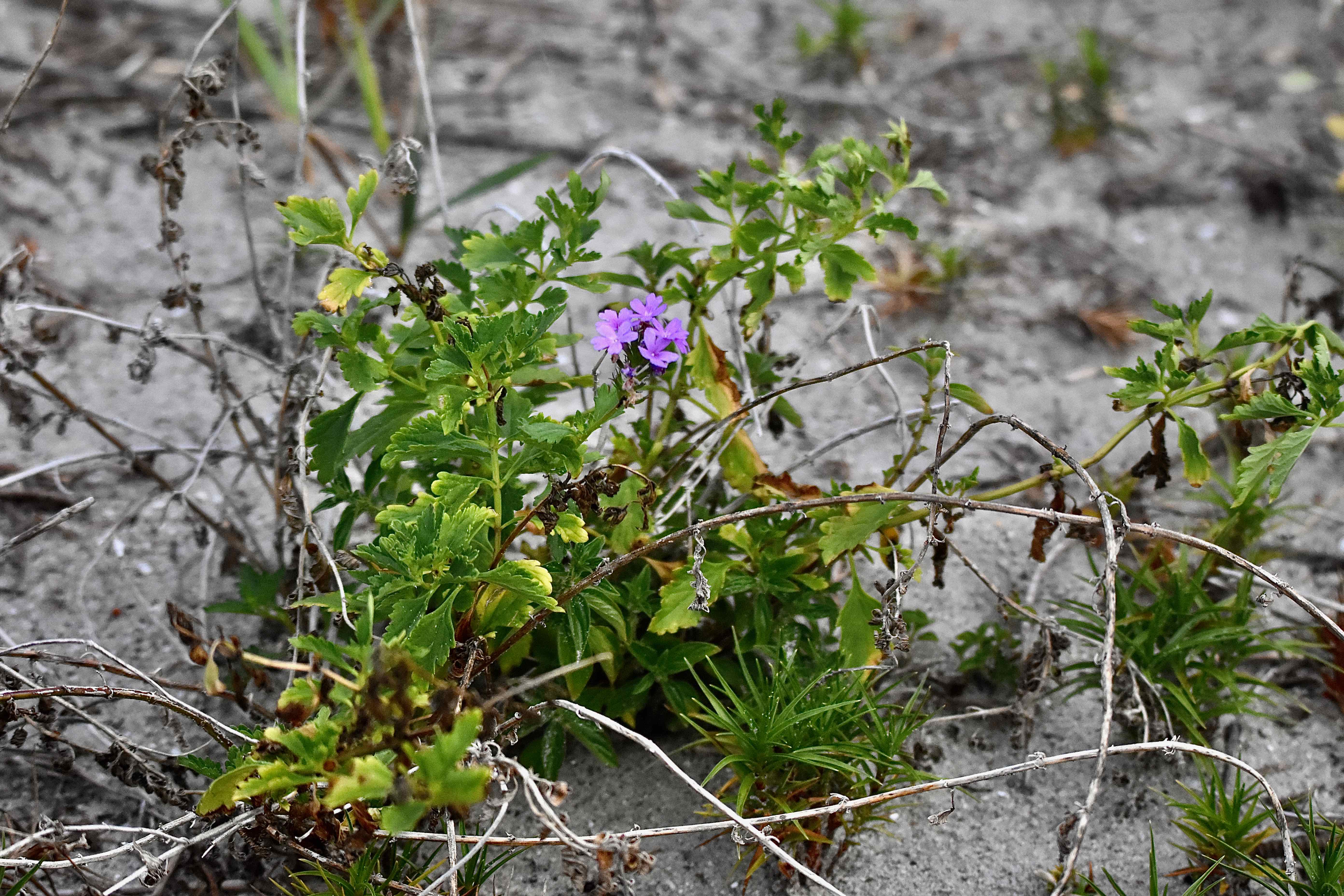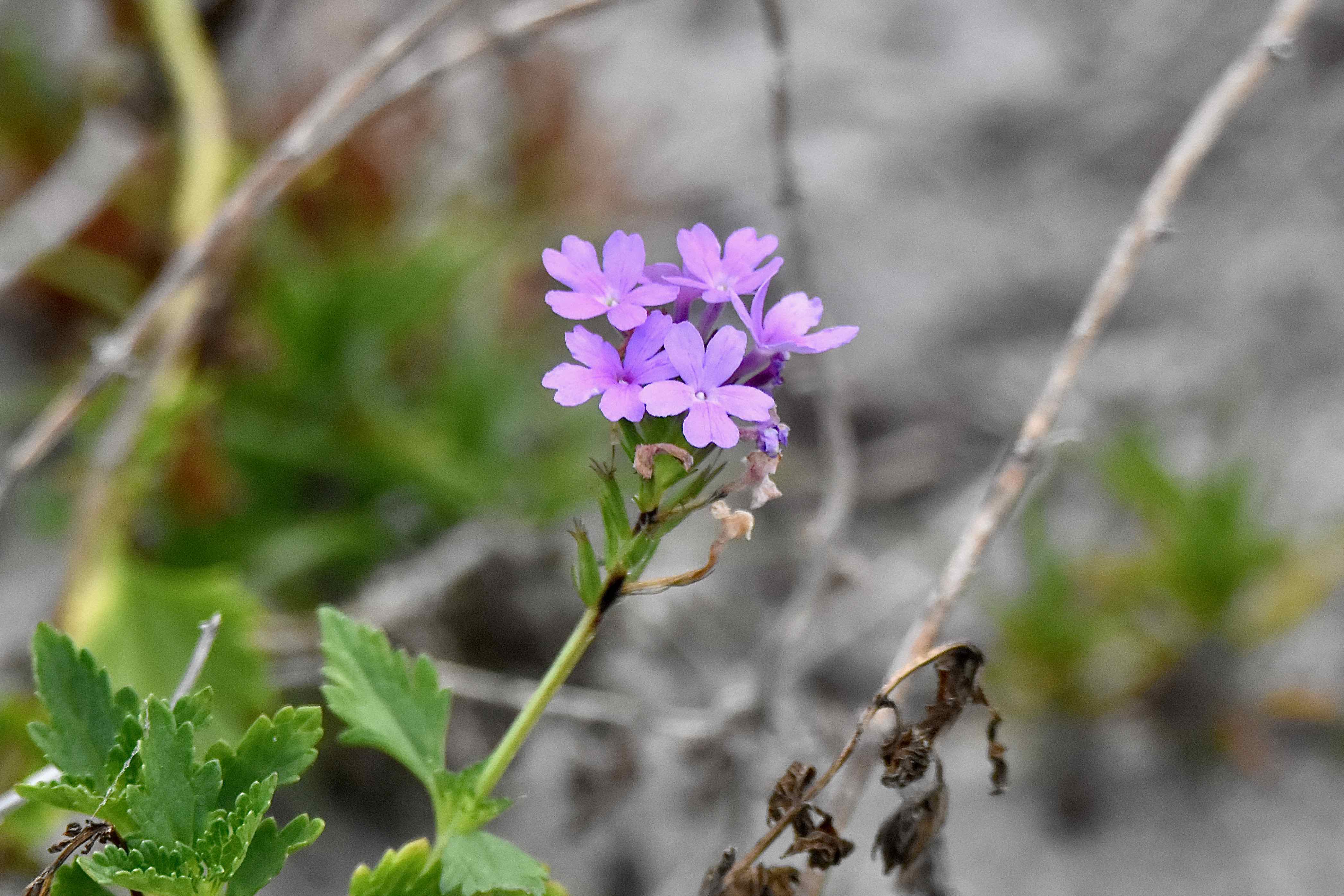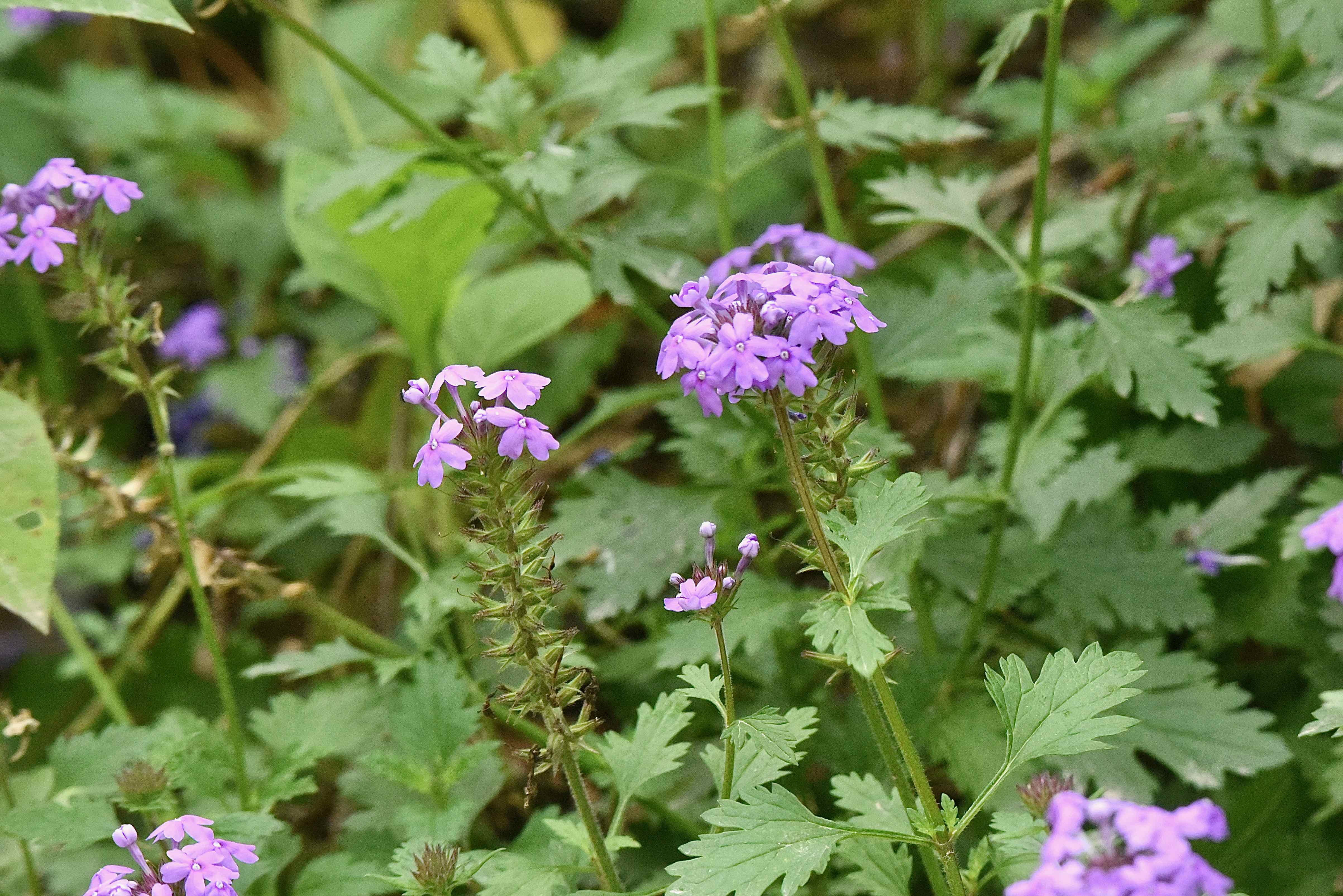
Beach verbena, photographed at Tomoka State Park, Ormond Beach, Volusia County, in March 2019. Others at Atlantic Dunes Park, Delray Beach.
The delicate lavender flowers might create the impression that beach verbena, Glandularia maritima, is on the tender side. That couldn't be further from the truth. It's a tough plant; has to be to survive in a tough environment.
Its natural habitat is the upland part of beach dunes, places that are sandy, dry, poor in the soil nutrients that most plants need to survive, let alone thrive. It gets hit with salt spray and the full heat of the sun without wilting in the least. Where it grows naturally, it plays an important role in holding the dune together and preventing erosion.
Beach verbena is a Florida native, with a natural range that extends along the Atlantic Coast from St. Johns County south through the Keys. It's also found in Collier and, oddly, Hendry and Levy counties. It's not found any place else on the planet.
It is a rare plant in the wild, and is considered vulnerable to extinction because of it's limited habitat and range. Florida legally classifies it as endangered. Besides beach dunes, beach verbena grows in pine rocklands — another rare habitat — and in moderately wet flatwoods. Fortunately, it is cultivated for use in landscapes as a ground cover and as a butterfly plant. It is available for sale at some nurseries that specialize in native Florida plants.
Beach verbena is a short plant, usually skying no more than six inches to a foot off the ground. On the other hand, it is capable of forming mounds three to five feet across. The leaves are simple and arranged opposite each other along the stem. The leaves are wedge-shaped, lobed or toothed along the edges and somewhat on the succulent side.
The flowers range in shade from lavender to purple. They have five lobes that are notched at the end, kind of heart-shaped. Individually, they're small, at most a half-inch across, but they bloom in clusters at the end of stems that amplify their effect. The flowers just shout their presence in what are often drab dune settings. Beach verbena blooms pretty much year round.
Beach verbena is a moderate to fast grower, and it can be aggressive. It will grow and do well inland as well as coastal setting as long as it has well-drained soil and a good amount of sunlight. It's used in mass plantings and in containers. Freezing temperatures can damage the plant, but that's not much of a problem here in subtropical South Florida. It can be grown from seeds or cuttings.
Other common name for beach verbena include seaside verbena, coastal vervain and coastal mock vervain. It is also known to some under the scientific synonym, Verbena maritima. It is a member of Verbenaceae, the verbena family.
One final note: beach verbena has two cousins that can be found growing in Florida, including one that's an exotic, known as moss verbena and a native called Tampa verbena that is similar in appearance but tends to be more upright. Tampa verbena is found in the central part of the Peninsula.
Atlantic Dunes Park



